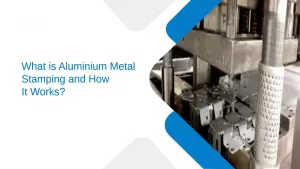Everything You Need to Know About Metal Manufacturing
Metal parts are ubiquitous in modern society as they are used in vehicles, buildings, and even kitchen appliances. Metal manufacturing is one of the pillars of modern industry. It involves extracting raw materials, for example, steel, aluminum, copper or brass, and transforming them into functional products using shaping, joining and finishing techniques.
Metalworking has come a long way from blacksmithing to advanced production lines. Today, metal manufacturers are integrating engineering, craftsmanship, and modern technology to achieve the required safety and quality standards. With a better understanding of fabricated metal and the workings of the industry, businesses and individuals can take the right approach for their smaller projects or large-scale industrial production.
What is Metal Fabrication?
Metal fabrication can be defined as a metal component that is cut, formed and assembled into a finished product. Such manufactured metal is not simply acquired from a foundry, rather, it is metal that has gone through sophisticated industrial processes.
To illustrate, a stainless-steel sheet could be laser-cut to shape, then formed into a frame, welded, and surface-coated for additional protection. This type of work is often part of sheet metal stamping, where precise shapes and forms are created for industries ranging from automotive to electronics. Such practices show the fabricated metal manufacturing industry’s core principle of converting a raw material into a practical, long-lasting item that serves a specific purpose.
Some of the metal products and components served include the following:
- Decorative and architectural metal work
- Structural beams for construction
- Vehicle and machine frames and panels
- Electronics and appliances parts
- Components for various appliances
Due to the versatility of wrought metal, its utilities range from aerospace engineering to home décor.
Steps in Metal Manufacturing
In metalworking, however, different materials and purpose-specific processes may vary the order of certain stages. Projects, however, are most likely to include the following stages:
- Design and Planning: The first step for any successful product is a meticulous plan, and in this case, elaborate blueprints detailing each section’s proportions, connection methods, and materials, tolerances, and so forth is the goal. It guarantees seamless assembly of the components.
- Cutting: Advanced metal working technology like plasma laser and water jet cutting machines are capable of achieving near-perfect precision, a necessary standard in wrought metal edged components. These are also capable of performing at clean-angled and edge cutting.In large-scale projects, manufacturers often rely on progressive tooling systems to achieve consistency, reduce waste, and ensure faster production cycles.
- Forming: The shaping processes include bending, rolling, and pressing which are all common techniques. Stamping is also often used.
- Joining: Pieces are connected through welding, riveting, or bolting. Welding is common due to the fact that bonds made this way are strong and seamless.
- Finishing: Some techniques used include painting, polishing, powder coating, and galvanizing. These techniques are especially useful in enhancing the appearance and protective surface coating.
By following the aforementioned steps, manufacturers of metal processes are able to create high quality products that have an appealing look and are durable and functional.
Categories of Metal Manufacturing Methods
As with any other industry, metal manufacturing also has categories, and different methods for different projects:
- Casting – The metal is melted and put into a mold. After it has cooled, it is taken out, revealing the shape.
- Machining – Material is removed to achieve a precise size or surface finish with help of tools.
- Stamping – Metal sheets are pressed into particular shapes with the help of dies. This is ideal for high-volume production.
- Welding – Two pieces are joined together with the application of heat, providing strong joints.
- Forging – Metal is hammered or pressed at high pressures to achieve great strength.
For most cases, fabricated metal manufacturing is a combination of several methods to create a piece. For instance, a body panel of a car can be stamped, welded to other panels, and then coated.
Why Metal Manufacturing Matters
We would be stuck without metal manufacturers. Without metal, there would be no reliable machinery to produce goods, no bridges to cross, or even no airplanes to fly in. Fabricated metal manufacturing provides the structural and functional components required to keep society moving.
Some key benefits of metal products include:
- Metals can withstand high pressure, temperature changes, and heavy loads.
- Many metals can be recycled repeatedly without losing quality.
- From tiny screws to massive steel beams, metals can be shaped into almost anything.
The industry also supports millions of jobs such as:
- Skilled welders and machinists
- Engineers
- Inspectors who ensure every product is up to standard
Choosing the Right Metal Manufacturer
Not all metal manufacturers are the same. Factors to consider while choosing the right partner include:
- Experience and Industry Knowledge
- Capability
- Quality Control
- Lead Times
- Customer Service
Fabricated metal manufacturing is evolving with automation, robotics, AI, and sustainable practices like recycled metals and eco-friendly coatings.
Final Thoughts
By understanding what is fabricated metal, the process of metal production, and the industry as a whole, you can make informed choices whether you’re producing small custom components or large industrial parts.




